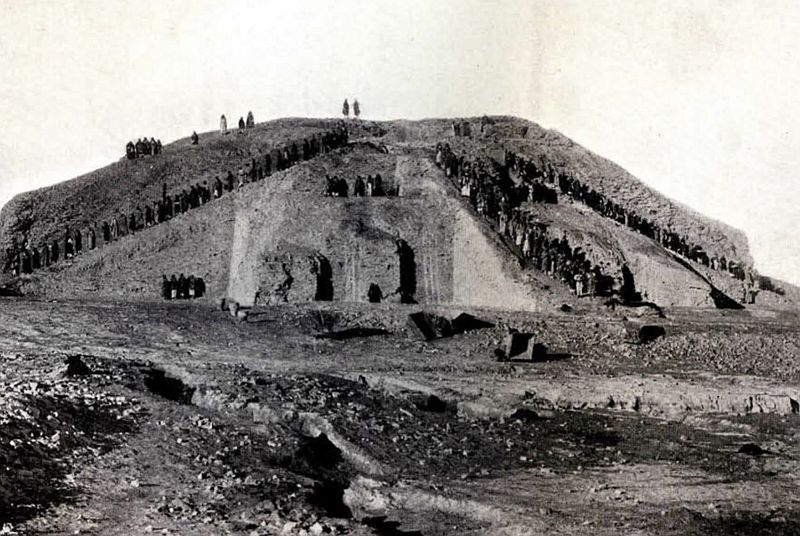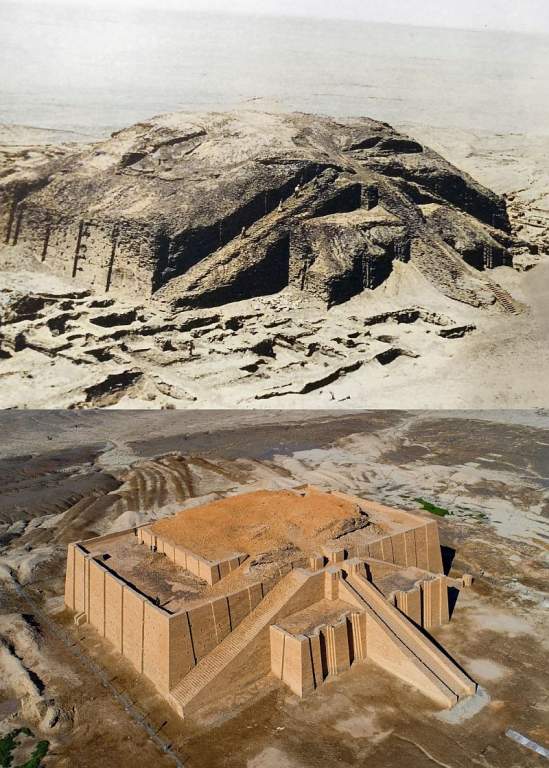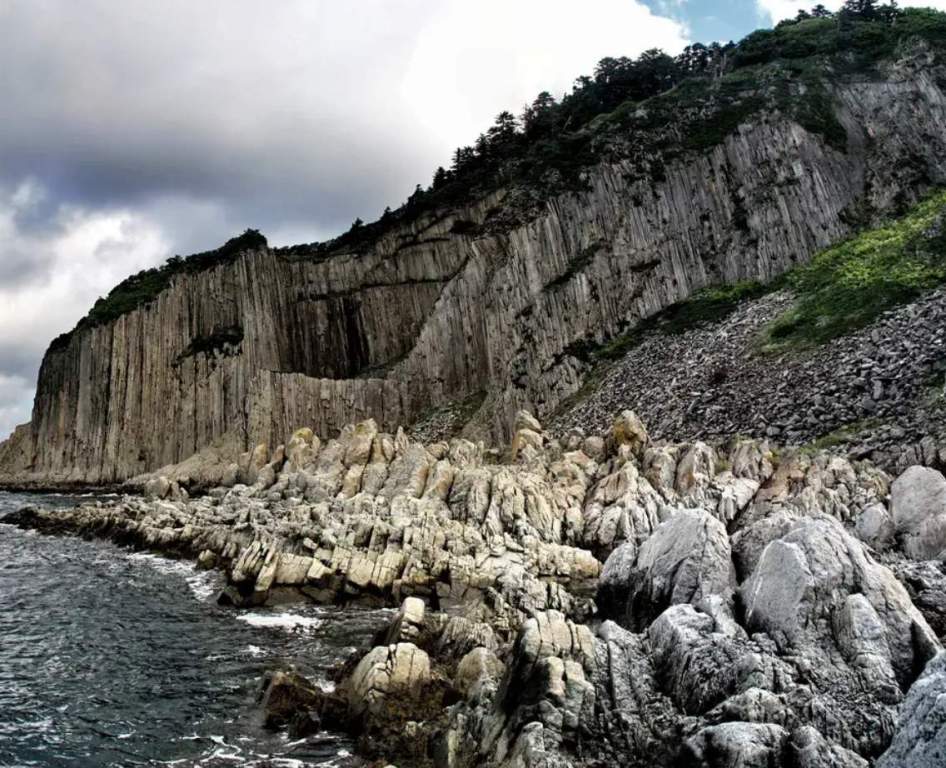The most notable architectural creation of the ancient Near East is the huge Great Ziggurat of Ur. An ancient Near Eastern ziggurat has four sides and rises much like an Egyptian pyramid. King Ur-Nammu built the ziggurat and dedicated it to Nanna/Sîn in the 21st century BC, during Ur’s Third Dynasty. King Shulgi completed the construction of the ziggurat in the 21st century BC to gain the allegiance of cities.
Unlike Egyptian pyramids, ziggurats had a layered façade to support the work that was done there, as well as the administrative control and religious rites that were vital to ancient Near Eastern communities. Ziggurats are a striking reminder of the strength and artistry of the ancient civilization that built them, and they can be seen throughout what is now Iran and Iraq.
The Great Ziggurat of Ur is one of the biggest and best-preserved ziggurats in Mesopotamia. Built in the 21st century BC during the Early Bronze Age, the structure had collapsed into ruins by the 6th century BC during the Neo-Babylonian period, when King Nabonidus repaired it. Aside from the ziggurat of Dur Untash (Chogha Zanbil), Ur’s ziggurat is the best-preserved of those recognized from Mesopotamia.
Sir Leonard Woolley excavated its remnants in the 1920s and 1930s. Sir Leonard Woolley revealed the monument in its entirety as part of a cooperative project with the British Museum in London and the University of Pennsylvania Museum in Philadelphia.
Sir Leonard Woolley discovered a gigantic, 64 x 46-meter rectangular pyramidal structure that was built with three tiers of terraces and was initially between 21 and 30 meters high. The structure was oriented toward the true north. The outer layer of the ziggurat is composed of mud bricks covered in baked bricks laid with bitumen, a naturally occurring tar; three monumental staircases led up to a gate at the first terrace level; a single staircase rose to a second terrace, which supported a platform on which a temple and the final and highest terrace stood.
Each of the baked bricks was about 29 x 29 x 7cm and weighed as much as 33 pounds. The bottom portion of the ziggurat, which sustained the first terrace, would have utilized some 720,000 baked bricks. The ziggurat at Ur and the temple atop it were constructed in 2100 BC by the king Ur-Nammu of the Third Dynasty of Ur for the moon goddess Nanna, the city-state’s heavenly patron. The construction of the ziggurat at Ur required an incredible amount of resources.
Like the spire of a medieval church, the construction would have been visible for miles around and the highest point in the city, making it a popular destination for both tourists and religious people. The ziggurat was probably the spot where Ur’s people would bring their agricultural excess and go to get their regular food allotments because it sustained the temple of the city’s patron. The most significant aspect of the ziggurat at Ur was the Nanna temple at its summit, which has sadly not survived. In antiquity, to visit the ziggurat at Ur was to seek both spiritual and physical nourishment.
Some blue-glazed bricks have been discovered that archaeologists believe may have been part of the temple adornment; the lower portions of the ziggurat that are still intact contain incredible engineering and design elements. For example, the architects incorporated holes in the baked exterior layer of the temple to allow water to escape from its core because the unbaked mud brick core of the temple would be alternately more or less moist depending on the season. Moreover, the ziggurat at Ur has undergone two restorations. To remove the winter rains, drains were incorporated into the terraces.
Restoration of the first kind occurred in antiquity; two upper terraces of the structure appear to have been replaced in the sixth century BC by the last Neo-Babylonian king, Nabodinus. The Ziggurat of Ur was shaken by explosions and damaged by small arms fire in the Gulf War of 1991. Nearby, four bomb craters can be observed, and the ziggurat’s walls have over 400 bullet holes. However, Saddam Hussein restored the outer walls of the massive lower foundation of the ziggurat, which included three monumental staircases leading up to the gate at the first terrace.
However, there has been some damage to the ziggurat at Ur since this most recent renovation. During the war fought by the United States and its allies, Saddam Hussein placed his MiG fighter jets adjacent to the Ziggurat of Ur in the hopes that bombs would spare them because they were scared of demolishing ancient sites. Hussein’s assumptions were only partially correct, as the ziggurat suffered some damage from American and coalition bombardment. Currently, the curator, Mohssein Naiif al-Gizzy, oversees the site.
Read More: The Mysterious 400 Stone Structure of Saudi Arabia












